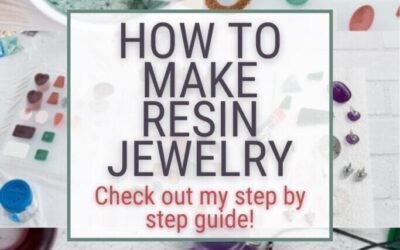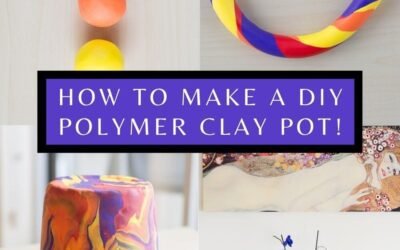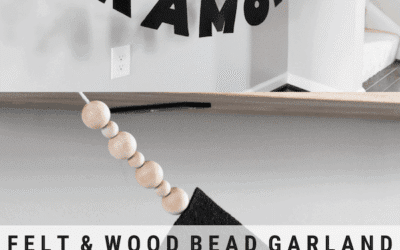This content may contain affiliate links. See my full disclosure here.
This post shares my DIY resin and wood serving tray tutorial. You’ve probably seen beautiful resin and wood serving tray tutorials around the web. This tutorial will show you an easy way to make a DIY resin and wood serving tray with a faux-marbled effect. No woodworking skills or tools required! This post originally appeared on bybrittanygoldwyn.com.
Hey gang, it’s time for a little resin project again. I had a lot of fun working on my tiny resin planters. But I wanted to do something that really put my FURNO 500 heat gun to work with some color mixing. Much like I did on my galaxy-inspired resin paint pour art.
A DIY resin and wood serving tray is the perfect project to do this. Why? Well, the raised edges on the tray make it the perfect resin containment device! With the galaxy-inspired wall art, I had to elevate the piece and worry about cleaning up the drips as I went. With a serving tray, the tray’s sides hold everything in.

If you’ve seen those beautiful resin/wood combo serving trays, this is inspired by those. The biggest difference is that this one is a more traditional tray and requires no tools or woodworking skills. That’s because it uses a pre-made unfinished wood tray you can pick up at any local craft store. You could also make over an old thrift store tray for this project.
So let’s chat about this project.

First pick up an unfinished wood tray from your local craft store. I got the larger of the two trays I’m using from Joann. The smaller one is from A.C. Moore. A.C. Moore seemed to have the best selection of different sizes and styles, as well as a few nice multipacks.
This would also be a perfect tutorial for upcycling an old or thrifted tray. You really need to like only the size and shape of the tray. You’ll cover any existing patterns or colors. Just make sure it’s in good shape!
Paint the tray. I used black acrylic craft paint for my trays. You can use any color that will complement the resin pigments you’ll be using.



After your painted tray is dry, you can begin planning your colors and mixing your resin. Remember that resin begins to set up quickly, so lay out your colors and cups in advance. For my trays, I mixed enough two-part resin for an entire tray. I used about 10 ounces for the larger tray.
Once the resin was thoroughly mixed, I pouring it into three separate cups and added colors and dyes to each one. You can mix until you’re happy with the color, but remember to work quickly. I like to mix the dye powders in thoroughly and then swirl a few drops of colorant in, not mixing it in completely.
Then I poured all of the resin onto the tray in random patterns. Don’t overthink this process. Just drizzle it all around, then set the dirty cups aside. (Tip: Have a trash bag ready to dump everything into. You don’t want resin getting on stuff.)











Immediately after I poured the resin onto the tray, I grabbed my heat gun and turned it on the second-to-lowest heat setting. I used the higher fan setting, but I’d recommend starting with the lower one until you get your bearings.
Then I blew the resin around to create interesting patterns. I dropped in random drops of black alcohol ink and blew those around to create more depth where necessary. I spent about two minutes blowing the resin around, which also ensured that all of the air bubbles were popped. On one of the trays, I also sprinkled in a bit of very fine glitter.
As resin cures, air bubbles will escape out the top of the resin. The heat and air of the heat gun pops these to ensure you have a super smooth high-gloss finish. When you’re done, monitor the project for another 30 minutes or so to make sure you don’t have any rouge air bubbles popping up.



Like resin? Check out my tips for how to make your own silicone mold for resin projects and how to make resin jewelry using molds!



Now just let it cure according to the instructions on your resin’s box. I let my sit under a ceiling fan for about 24 hours. One needed a bit more time than this, though. What do you think? Aren’t they beautiful?
The possibilities are really endless with this project. You can mix any colors you’d like. And each piece is truly unique because the heat gun helps you create a beautiful marble-effect that’s a bit different every time.







Want more resin projects? Check out my epoxy resin paint pour for beginners tutorial and my tips on whether to use a shiny or matte silicone mold for resin projects.
Share my DIY Resin and Wood Serving Tray on Pinterest!





0 Comments